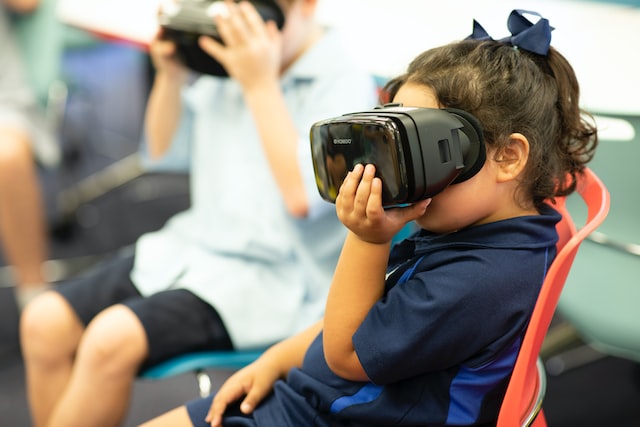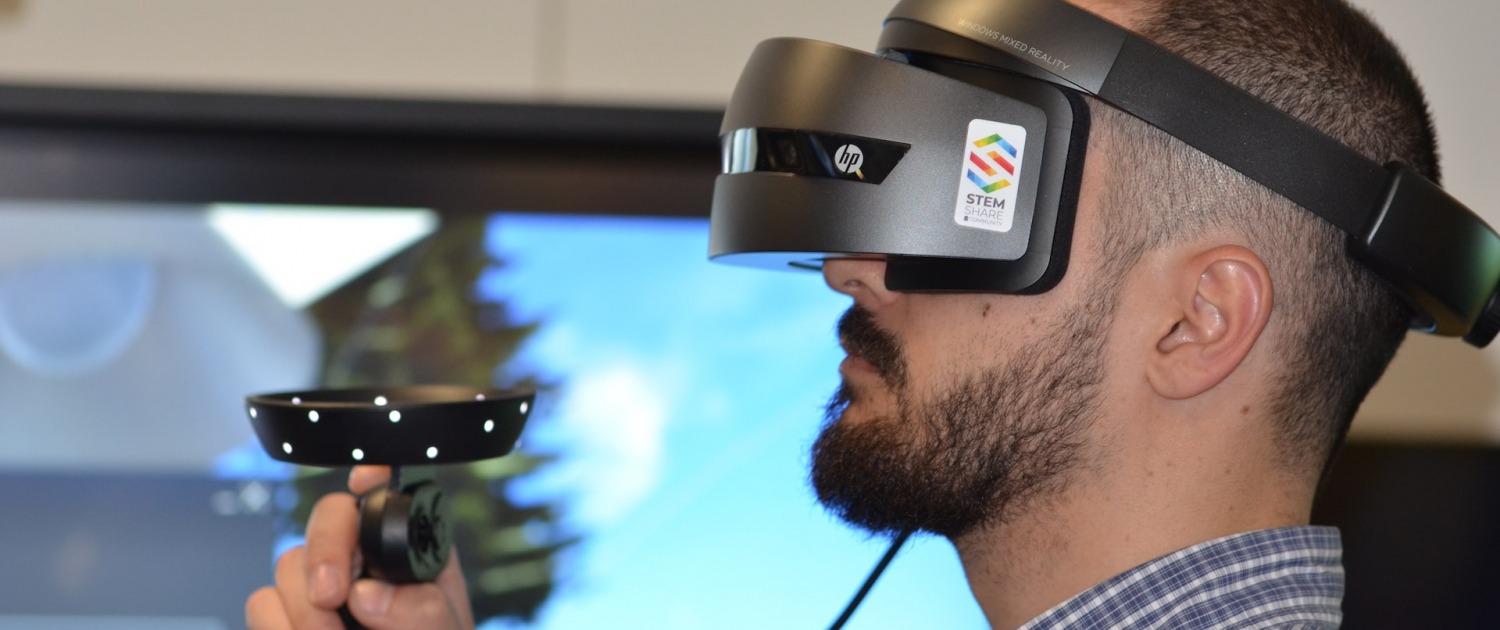Virtual reality has the potential to revolutionize society for the better. By immersing people in realistic, three-dimensional environments, VR can provide unprecedented levels of engagement and connection. For example, VR can be used to simulate historical events, providing a more immersive and educational experience than traditional methods such as textbooks or lectures. Additionally, VR can be used to train people for high-pressure situations such as medical procedures or military combat. By providing realistic simulations, VR can help people learn and prepare for potentially life-saving situations. Finally, VR can be used to create social experiences that are not possible in the real world. For example, VR can be used to connect people who are geographically separated, or to create shared experiences between people of different cultures. By bringing people together in new and innovative ways, VR has the potential to transform society for the better.
What is Virtual Reality?
Virtual reality is a computer-generated environment that allows a user to interact with three-dimensional images. It is often used in video games, simulations, and training programs. Virtual reality can create realistic environments that are not possible to experience in the real world.
Virtual reality technology has come a long way since its inception in the early 1950s. Early virtual reality systems used large, expensive computers to generate crude images. Today, virtual reality is created using powerful graphics processors and software that can create realistic environments.
Virtual reality is a simulated experience that can be similar to or completely different from the real world. Applications of virtual reality include entertainment (e.g. video games) and education (e.g. medical or military training). Other distinct types of VR-style technology include augmented reality and mixed reality.
A person using virtual reality equipment is typically able to “look around” the artificial world, move about in it, and interact with virtual features or items. The effect is commonly created by VR headsets consisting of a head-mounted display with one or two small high-resolution OLED or LCD monitors providing separate images for each eye, stereoscopic headphones delivering sound to each ear, and head motion tracking sensors. Some VR systems also include tactile information, generally known as haptic feedback.
Haptic feedback is the sense of touch that can be simulated in virtual reality. This can be used to create the sensation of being able to touch, feel, and manipulate virtual objects. Most VR systems use some form of haptic feedback, which can be as simple as rumble motors in-game controllers or as complex as full-body suits that provide a variety of sensations.
VR as an Educational Tool: How Can VR be Used to Provide a More Immersive and Educational Experience Than Traditional Methods?

There is no doubt that virtual reality (VR) technology has the potential to revolutionize education. By providing a more immersive and realistic experience, VR can give students a deeper understanding of concepts and help them retain information better. Additionally, VR can be used to create simulations of real-world scenarios that would be difficult or impossible to recreate in a traditional classroom setting.
One of the most promising applications of VR in education is its ability to provide students with a more immersive learning experience. Traditional methods of instruction, such as lectures and textbooks, can often be dry and difficult to engage with. VR, on the other hand, has the potential to make learning more interactive and engaging. For example, instead of simply reading about the Battle of Gettysburg, students could put on a VR headset and actually experience what it was like to be there.
In addition to providing a more immersive learning experience, VR can also help students retain information better. Studies have shown that people learn better when they are actively engaged with material, and VR provides a perfect opportunity for active learning. By allowing students to interact with material in a realistic and immersive environment, VR can help them better understand and remember concepts.
Finally, VR can be used to create simulations of real-world scenarios that would be difficult or impossible to recreate in a traditional classroom setting. For example, VR could be used to simulate a dangerous situation, such as a chemical spill, so that students could learn how to respond without actually putting themselves in harm’s way. Alternatively, VR could be used to take students on virtual field trips to places they would otherwise never be able to visit, such as the Great Barrier Reef or the inside of a volcano.
VR as a Training Tool: How Can VR be Used to Help People Learn and Prepare for Potentially Life-Saving Situations?
Virtual reality can be an invaluable tool for training people for potentially life-saving situations. By immersing individuals in realistic simulations, VR can help them to learn and prepare for what to do in an emergency.
VR can provide a safe and controlled environment in which to train people for dangerous situations. It can be used to teach skills such as CPR or first aid, or to simulate scenarios such as fires or natural disasters. VR can also be used to help people who may have anxiety disorders or phobias, by gradually exposing them to their fears in a controlled setting.
Training with VR has been shown to be effective in reducing stress and improving performance in high-pressure situations. VR can also help people to retain information better than traditional methods such as lectures or textbooks.
Using VR for training can help to save lives by preparing people for potentially dangerous situations. It is an effective and efficient way to learn, and can be used by people of all ages and abilities.
VR as a Social Tool: How Can VR be Used to Create Social Experiences That are not Possible in the Real World?
Virtual reality has the potential to create social experiences that are not possible in the real world. VR can be used to connect people who are geographically separated, or to allow users to interact with digital avatars of real people. VR can also be used to create simulated social environments, such as those found in online games.
There are a number of potential applications for VR as a social tool. For example, VR could be used to:
– Connect people who are geographically separated: VR can be used to bring people together from all over the world, regardless of location. This could be useful for things like business meetings or family gatherings.
– Allow users to interact with digital avatars of real people: VR can be used to create digital representations of real people, which can then be interacted with in a social setting. This could be used for things like online dating or social networking.
– Create simulated social environments: VR can be used to create simulated social environments, such as those found in online games. This could be used to help people learn social skills or to simply provide a fun and safe place to interact with others.
VR has the potential to revolutionize the way we interact with each other. By harnessing the power of VR, we can create social experiences that are not possible in the real world.
Conclusion: How is VR Transforming Society for the Better?
Virtual reality has the potential to transform society for the better in a number of ways. VR can be used as a training tool to help people learn and prepare for potentially life-saving situations. VR can also be used as a social tool to connect people who are geographically separated, or to allow users to interact with digital avatars of real people. Finally, VR can be used to create simulations of real-world scenarios that would be difficult or impossible to recreate in a traditional classroom setting. Overall, VR has the potential to improve the way we learn, work, and interact with each other. A future with VR is one that is more connected, more immersive, and more efficient.

